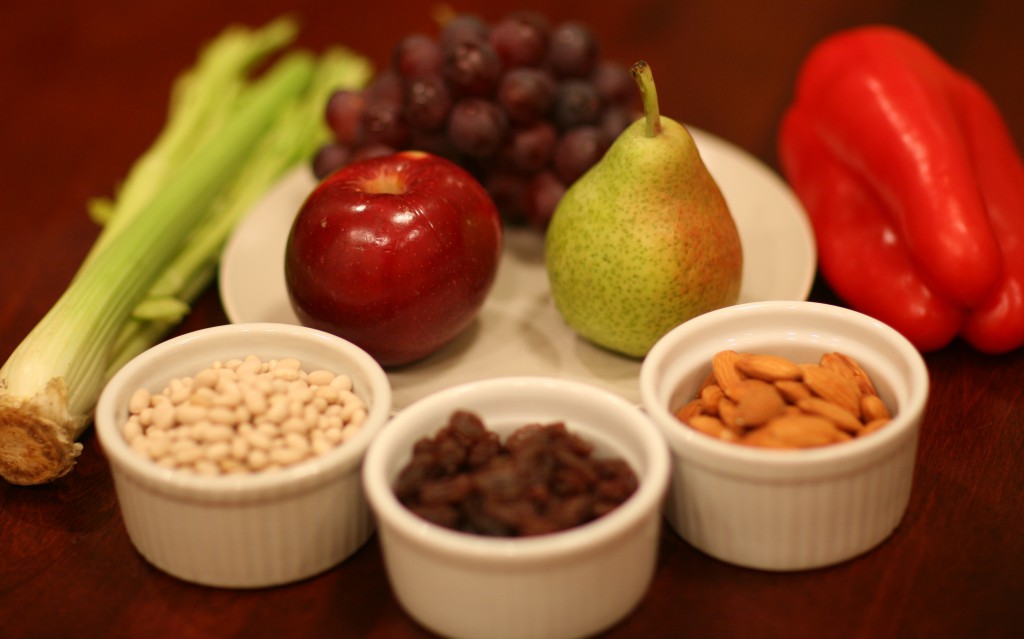You may have noticed an uptick in the marketing of whole grains and fiber lately. From pasta to sugary breakfast cereals, many products are now being touted as containing whole grains or more fiber with the hope that you will buy them. So what’s the deal? You know that whole grains and fiber are supposed to be good for you so this is a good thing, right? Well… yes and no…. let me explain. Fiber and whole grains are two things that while linked, are not synonymous and hopefully I can help clear up the differences between them. This first post will focus on fiber and I’ll follow up with one on whole grains soon.
The recommendation for fiber intake is 14 grams per 1,000 calories consumed; so if you eat about 2,000 calories per day you should be consuming about 28 grams of fiber. What is Fiber? It is the indigestible part of the foods we eat (some people refer to it as roughage). There are two types of fiber which are typically referred to as soluble or insoluble; the big difference being that soluble fiber absorbs water and becomes gelatinous. Some types of soluble fiber can be used by gut bacteria as fuel, which is important to know because the by-product of this is gas (we all know what that is!).
Are you wondering why we need fiber if it’s something that our bodies can’t digest? Fiber actually has many health benefits. Think of fiber as the broom that helps to clean out your digestive tract, helping to eliminate waste and prevent constipation, but that’s not all! Fiber also helps to slow the rate of digestion which is helps to make you feel full longer and slows the rate of sugar entering your bloodstream which helps people maintain bodyweight and control diabetes. Fiber also helps to reduce the amount of cholesterol in your blood by binding with fatty acids which can help prevent heart disease.
So fiber is great, right? Well, not all fiber is created equal. Fibers that are naturally occurring in foods (like the fiber in vegetables, fruits, nuts, seeds, whole grains and beans) have the added benefit of supplying your body with vitamins and minerals that can improve health in other ways. Other types of fiber that are used as additives in foods just so that they can carry a high fiber label may or may not be as useful and can cause quite a bit of gastric distress if eaten in large quantities. Some words to look out for on labels include: psyllium husk, beta-glucan, inulin, resistant dextrins or resistant starch, fructans, xanthan gum, cellulose, modified starch, guar gum, fructooligosaccharides (FOS), and oligo- or polysaccharides, and various brans.
If you are one of the millions of Americans that needs to increase fiber intake, the first thing you need to remember is go slowly! If you are not used to fiber and you suddenly up your intake it could spell constipation, gas and discomfort! It is also important to increase your water consumption to help prevent constipation as your intake increases. If you focus on adding more vegetables, fruits, nuts, seeds, whole grains and beans instead of just looking at the number of grams in processed foods, your body will thank you!
 Some delicious sources of fiber
Some delicious sources of fiber
